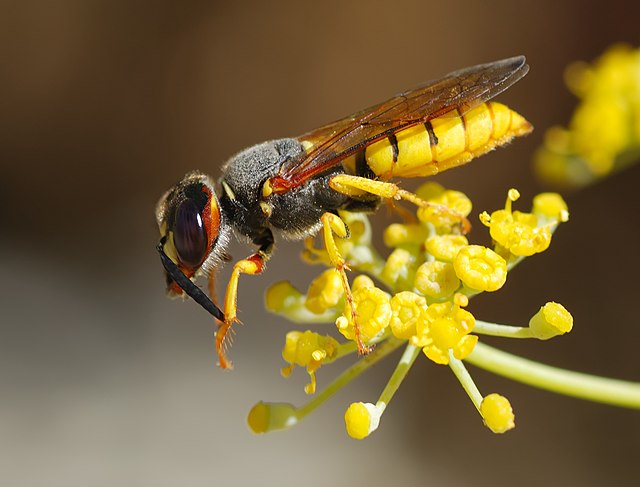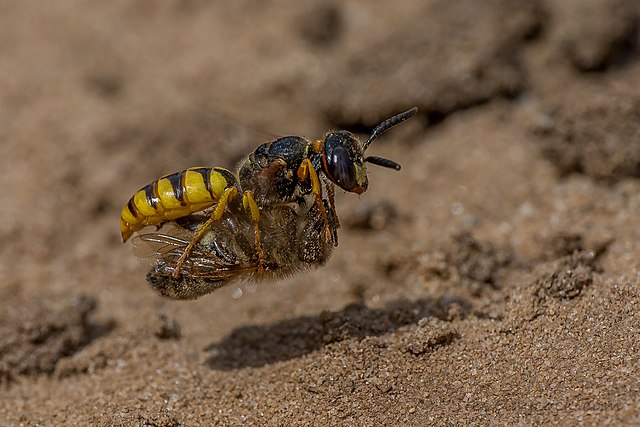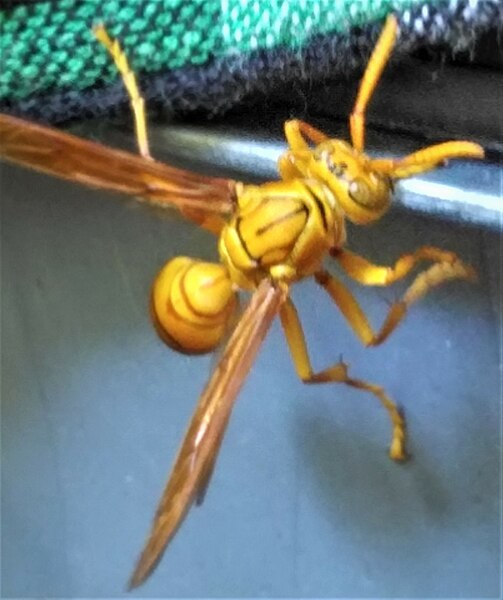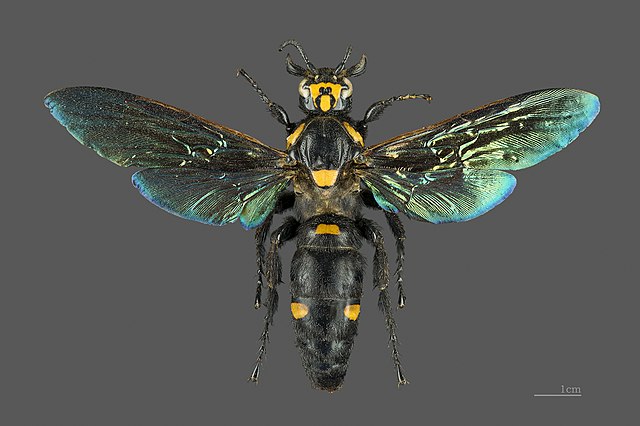Beewolves, also known as bee-hunters or bee-killer wasps, are solitary, predatory wasps, most of which prey on bees, hence their common name. The adult females dig tunnels in the ground for nesting, while the territorial males mark twigs and other objects with pheromones to claim the territory from competing males.
Beewolf
Beewolf with honey bee
Philanthus sp. capturing prey
European beewolf carrying a honeybee to its tunnel
A wasp is any insect of the narrow-waisted suborder Apocrita of the order Hymenoptera which is neither a bee nor an ant; this excludes the broad-waisted sawflies (Symphyta), which look somewhat like wasps, but are in a separate suborder. The wasps do not constitute a clade, a complete natural group with a single ancestor, as bees and ants are deeply nested within the wasps, having evolved from wasp ancestors. Wasps that are members of the clade Aculeata can sting their prey.
Wasp
Polistes sp., India
Megascolia procer, a giant solitary species from Java in the Scoliidae. This specimen's length is 77 mm (3.0 in) and its wingspan is 115 mm (4.5 in).
Megarhyssa macrurus, a parasitoid. The body of a female is 50 mm (2.0 in) long, with a c. 100 mm (3.9 in) ovipositor








